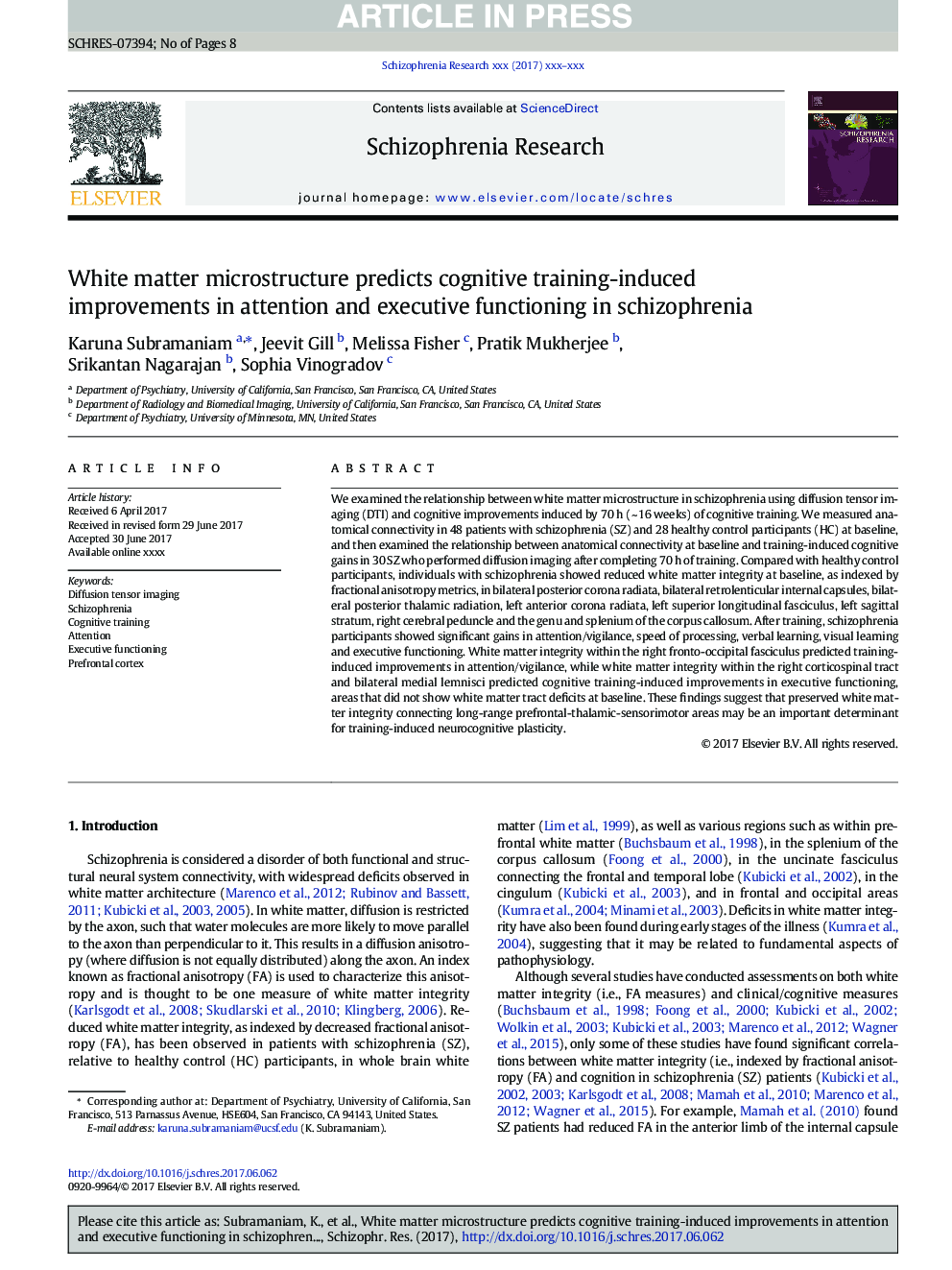| Article ID | Journal | Published Year | Pages | File Type |
|---|---|---|---|---|
| 6821924 | Schizophrenia Research | 2018 | 8 Pages |
Abstract
We examined the relationship between white matter microstructure in schizophrenia using diffusion tensor imaging (DTI) and cognitive improvements induced by 70Â h (~Â 16Â weeks) of cognitive training. We measured anatomical connectivity in 48 patients with schizophrenia (SZ) and 28 healthy control participants (HC) at baseline, and then examined the relationship between anatomical connectivity at baseline and training-induced cognitive gains in 30 SZ who performed diffusion imaging after completing 70Â h of training. Compared with healthy control participants, individuals with schizophrenia showed reduced white matter integrity at baseline, as indexed by fractional anisotropy metrics, in bilateral posterior corona radiata, bilateral retrolenticular internal capsules, bilateral posterior thalamic radiation, left anterior corona radiata, left superior longitudinal fasciculus, left sagittal stratum, right cerebral peduncle and the genu and splenium of the corpus callosum. After training, schizophrenia participants showed significant gains in attention/vigilance, speed of processing, verbal learning, visual learning and executive functioning. White matter integrity within the right fronto-occipital fasciculus predicted training-induced improvements in attention/vigilance, while white matter integrity within the right corticospinal tract and bilateral medial lemnisci predicted cognitive training-induced improvements in executive functioning, areas that did not show white matter tract deficits at baseline. These findings suggest that preserved white matter integrity connecting long-range prefrontal-thalamic-sensorimotor areas may be an important determinant for training-induced neurocognitive plasticity.
Keywords
Related Topics
Life Sciences
Neuroscience
Behavioral Neuroscience
Authors
Karuna Subramaniam, Jeevit Gill, Melissa Fisher, Pratik Mukherjee, Srikantan Nagarajan, Sophia Vinogradov,
